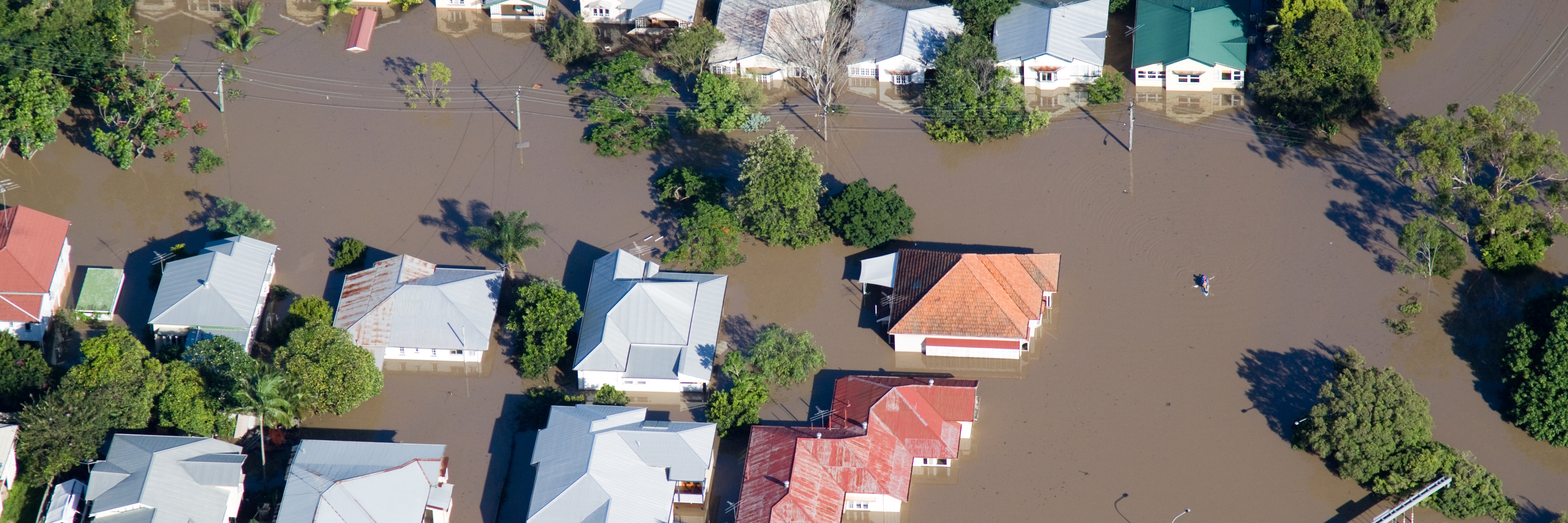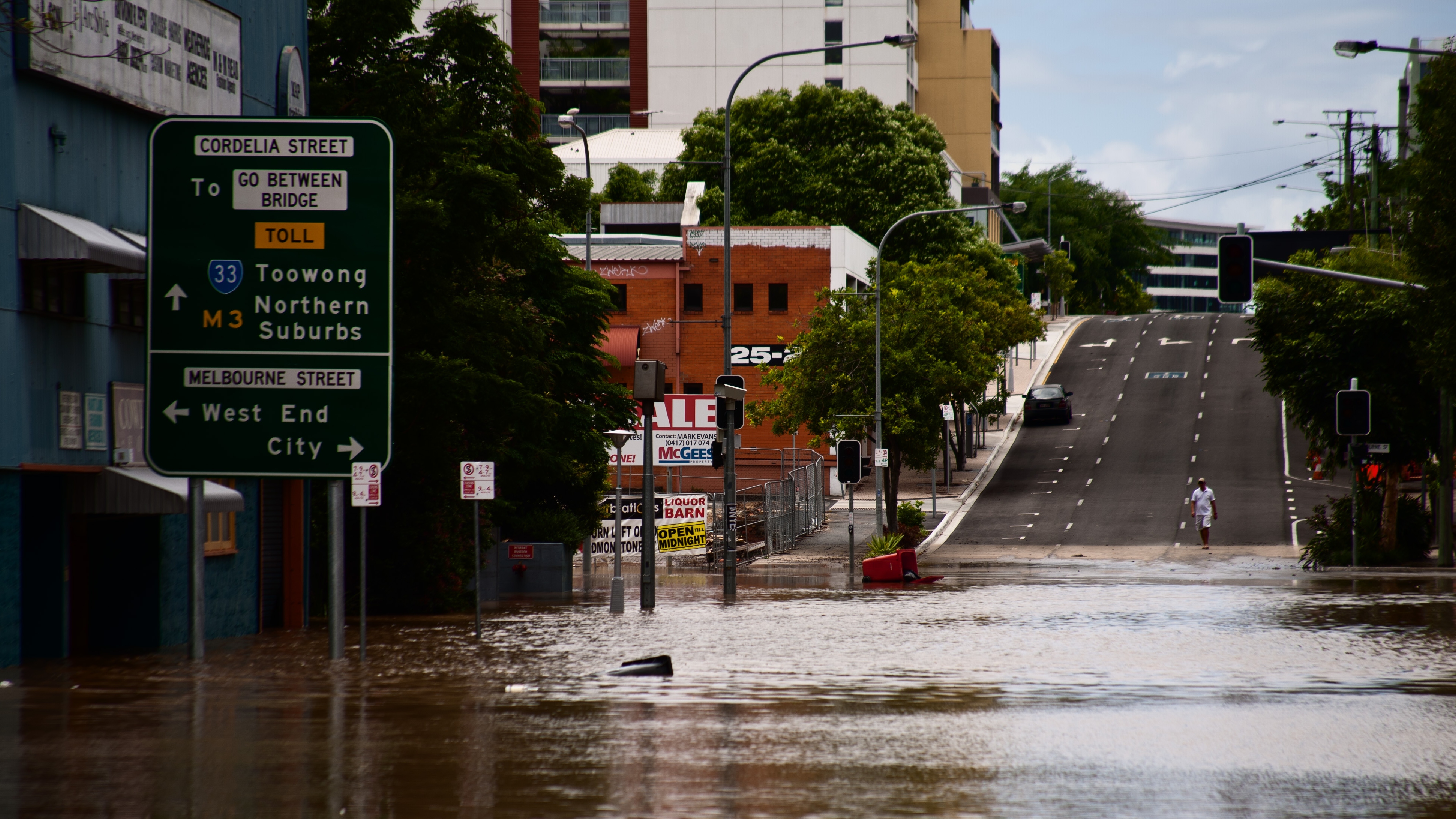
properties.trackTitle
properties.trackSubtitle
Exposure to climate risk has demonstrably increased in specific areas. For example, when floods covered Brisbane in 1974 the estimated property damage was $980 million. In 2011, less severe floods resulted in an estimated loss of $5.6 billion. So how do we account for this disproportionate jump in cost?
As the population in urban areas grows so does housing density which, in turn, increases the severity of flood damage. Housing density doubled in Brisbane in the years between floods, but this alone cannot account for the steep increase in losses. The phenomenon is more fully explained by the fact that the growing value of properties in flood-prone areas has a multiplying effect. In addition, as climate change unfolds and the flood line expands, it puts ever larger areas of housing at risk.
The banking sector may well consider that, ‘this doesn’t affect us right now’. Especially in light of the fact that there have been a number of natural catastrophes in the past that likely had minimal impact on banks’ balance sheets. However, this is largely because more extreme events haven’t been seen in recent decades and because expected land devaluation has not yet been realised.
An increasingly nervous property market
Public awareness around climate risk is growing. Barely a year goes by without a major flood event in Australia, which could result in buyers becoming more wary. We could well see significant falls in land value in the most flood-prone regions following a flood event when the true underlying risk is suddenly priced in. At the same time, home insurance premiums have become a lot more expensive for houses with a heightened flood risk, which is increasing the prevalence of under-insurance and non-insurance. This could put homeowners in financial distress if they suffer building damage following a severe weather event and, in turn, increases the risk that they will default on loans.
In the past, government often stepped in to cover the gap left by under- and non-insurance, but this may not always be the case. Moreover, while government intervention usually addresses the problem of building damage, it doesn’t compensate for land devaluation. So, in addition to the increased risk of loan default following an extreme weather event, sustained land devaluation in high risk areas also affects the amount of capital banks need to hold.
All this means that banks are likely to see greater balance sheet impacts in the future as natural catastrophes become more frequent and severe. What’s more, the damage caused by these events will likely increase due to incursion of hazards beyond current planning lines and building code regions.
The risks associated with increased housing damage coupled to greater prevalence of under- and non-insurance will not stop at amplifying the likelihood of loan defaults. The financial impact of on banks could be even higher due to the associated land devaluation. And banks with a concentration of high-risk properties will be disproportionately affected. Analysis suggests that more than 75% of the flood risk in Brisbane and the Gold Coast is concentrated on just 7% of properties.

Options available to banks
Some banks are proactively starting to take an in-depth look at the climate risk exposure of their portfolios and are considering various approaches to managing it:
First, they can try to limit or avoid climate risk exposure, but this may be difficult to achieve. Most banks already have sizeable exposure within their existing portfolios and it would be unrealistic to imagine banks refusing to offer customers mortgages in entire suburbs or postcodes.
Second, banks could try to reduce the size of their climate risk exposure by adapting to risks or by way of mitigation strategies. The latter approach would include the need to drive land use planning reform, fund flood defence works, offer lower Loan to Value Ratios, charge higher interest rates, mandate on-going building insurance, encourage building upgrades for older or more hazard prone buildings or extend the use of Lender’s Mortgage Insurance. Whilst these measures may reduce the default risk following a natural catastrophe, they don’t provide much protection against land devaluation.
Third, banks could accept all risks and choose to simply absorb the impact on profitability in years where there are significant natural catastrophes. This strategy works where shareholders are comfortable with potential earnings volatility – as well as the increased cost of capital associated with holding these risks. However, there are reputational risks to consider if this approach is out of line with competitor strategies, or in the event that one bank has a strong geographical concentration of risk. The problem here is that the market may not look favourably on a bank that takes a large financial knock while others do not.
Finally, banks could choose to transfer the risk to a third party. While this does come at a cost, the upside is that it removes profit volatility and may also reduce capital requirements. All things considered, transferring flood risks to a company like Munich Re can end up being more cost-effective than holding them, since Munich Re has a large global portfolio of climate risks and is able to benefit from this risk diversity. In addition, tapping into the extensive Australian natural catastrophe expertise, which Munich Re has accumulated over 50 years, offers banks the comfort of knowing their portfolio risks are properly quantified and understood.
The final analysis
There is increased pressure from investors and regulators for companies to understand, manage and mitigate their climate risk exposure. This makes it perilous for banks to trail their competitors when managing risk. Taking action now will avoid a scenario where competitors have already cherry-picked the best risks. At the same time, strengthening the assessment and disclosure of climate-related risks will enable financial institutions to harness new business opportunities, serve customers better and help build the resilience and sustainability of the financial sector.
While it’s obviously important to keep an eye on the future and understand how climate change will affect a bank’s portfolio over the next 30 years, competitive advantage definitely lies in being among the first to properly incorporate today’s climate exposure into portfolio planning and management.
/Hawkins_Scott_BJM0691_1x1.jpg/_jcr_content/renditions/original.image_file.120.120.file/Hawkins_Scott_BJM0691_1x1.jpg)


